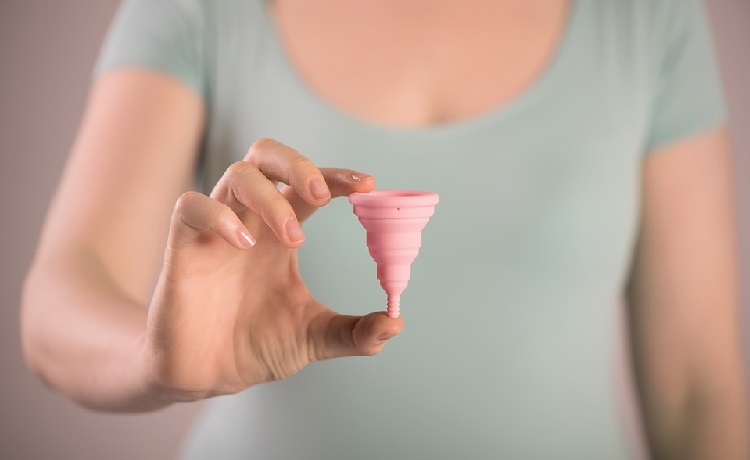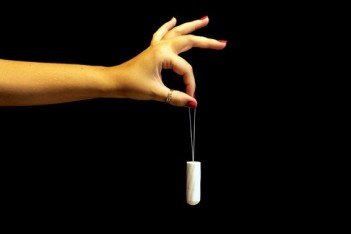The Periodic Table | 5 | On the Reusable Rag
Dear Menstruators,
If you have been following previous installments of this column you will have noticed me banging on about the wonders of reusable menstrual products every chance I get. Since I made the switch to the menstrual cup six years ago I have become a veritable proselytizer for the wonders of reusable products, particularly their benefits for our bodies, our planet and our pockets.
Reusables were a rather niche product for a long time, but over the last few years a far greater diversity of products have come on the market making reusables ever more accessible for the average menstruator. In Ireland some of these are still hard to come by and have to be ordered online, but I swear once you try them you will probably never go back.
The Menstrual Cup

Designed originally in 1987 by Lou Crawford, the menstrual cup has become the reusable sanitary product of choice for many menstruators. The perfect substitute for the tampon, it can be used safely for up to 12 hours and left in overnight during every cycle for up to 10 years. Small silicone cups, they are inserted into the opening of the vagina where they create a seal and collect blood throughout the day.
They hold a surprising amount of blood, up to three times more than a tampon, which for most users means less changing. For heavier flows they can be emptied, cleaned and reinserted as necessary. They come in an increasingly diverse range of sizes for younger and older people and people who have had babies.
There are now a myriad of menstrual cups on the market, three of the most popular and widely available being the Keeper, the Moon Cup and the Diva Cup. The only recommendations needed are to get the right size for you, and make sure it is medical grade silicone… you are going to insert it into your vagina after all.
Cloth Pads
Did you ever wonder what your Granny used during her time of the month? Probably a rag or old piece of cloth pinned to her clothing. This is where the slang ‘on the rag’ comes from. And rags are certainly making a comeback. Reusable sanitary pads, possibly the oldest solution to menstrual hygiene, are becoming popular once again. Whether you make your own, or buy from a craftsy person on Etsy or order a complete set of cutsey pads from Glad Ragsor Luna pads, the options are endless. From panty liners to night-time super absorbent pads, all flows are catered for.
They don’t create odd odors (just the slight rusty smell of blood). They can be used for longer than disposable pads and they don’t give you that horrible feeling of wearing a nappy. If they have any downsides is that they can be a little bulky and they must be washed thoroughly after each use.

Sea Sponges
Perhaps the least known of all alternative menstrual products, the sea sponge works like a tampon: it is inserted into the vagina and absorbs the blood. They are totally natural and chemical free and can be squeezed out, rinsed and reused during the same cycle. They have a shorter lifespan than the menstrual cup but are relatively cheap. Their greatest advantage is that they are perfect for sex on your period. There are some brands like Sea Pearls that are marketed explicitly for menstruation but you can also find them in arts and crafts stores – just make sure they have not been treated with any chemicals.

Menstrual Underwear
We all have pairs of old, ratty, stained underwear we keep aside for ‘that time of the month’. Underwear we don’t mind ruining if there is leak or spill. Some sassy entrepreneurs have taken this a step further and created the ‘period panty’. Period panties are reinforced, absorbent briefs that are designed to replace pads. There are many brands on the market but Luna Pads are among the most popular and an increasing number of companies are providing underwear for menstruators of all genders.
All in all there is no good reason not to explore at least one or two alternatives to the commercial pads or tampons. The initial investment can be pretty steep, with the average menstrual cup costing €30, but you will have recovered its value within six months and it can last up to ten years.
Without wanting to pile on the guilt and shame for those of use who still use disposables, menstruates have to deal with enough guilt and shame as it is. There are some issues with commercial disposables worth pointing out for anyone still unsure about the switch to reusables:
Tampons and pads are inserted and used next to one of the most sensitive and permeable body parts: the vagina and vulva. Commercial tampons use bleached, non-organic cotton, contain dioxins, absorb more than just your menses drying out your vagina and can leave micro-fibers behind. Commercial pads can contain as much plastic as four plastic bags, exposing you to harmful chemicals like BPAs. The synthetic materials and plastics used in commercial pads restrict your airflow and are a breeding ground for bacteria and yeast infections.
Tampons have also been linked to Toxic Shock Syndrome, a life-threatening infection that caused up to thirty deaths between 1979 and 1983.
An average person will use up to 16,800 pads or tampons throughout their life time of menstruating, creating mountains of non-biodegradable waste that ends up in oceans and on land-fills.

The yearly spend on Tampons for the average person is a minimum of €60 and that is if they only use one box per cycle and have 12 cycles a year.
The traditional FemCare industry is exclusionary and actively uses body shaming as an advertising strategy. How many adds have you seen for sanitary products where they used real blood instead of a mysterious blue liquid? Or an add for tampons where the fact that they are ‘discreet’ is not the main selling point?
In buying reusable menstrual products you are more often than not supporting small to medium sized businesses run by people genuinely concerned with menstrual health rather than massive corporations interested only in their profit margins.
Many people who use sustainable menstrual products report feeling more connected to their bodies their menstrual cycle and experience less of the negative symptoms associated with menstruation such as PMS and cramps.
Yours,
Aunt Flow
